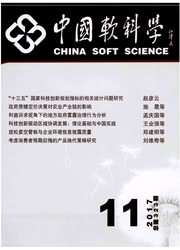

 中文摘要:
中文摘要:
基于Tapio模型,利用1994—2010年中国工业行业面板数据,实证研究了工业经济增长与碳排放的脱钩关系,并运用LMDI方法对影响碳排放强度变化的主要因素进行了分解。研究发现,2000年之后中国工业经济增长与碳排放趋于稳定的弱脱钩状态,波动性很小;能耗脱钩因子对工业碳排放脱钩表现出持续的正效应,对脱钩的影响力要远大于排放脱钩因子;能源强度下降是推动中国工业碳减排的关键,能源结构红利和工业结构红利尚未出现。在此基础上,对中国工业碳排放脱钩历程及其影响因素的不同效应进行了经济解释,并提出发展低碳经济的相关建议。
 英文摘要:
英文摘要:
Based on energy consumption and economic growth data of Chinese industries in 1994-2010, this paper puts forward a theoretical model to analyze decoupling relationship between carbon emission and industrial economic growth, and adopts LMDI method to decompose the driving factors of carbon emission. The authors find that the decoupling relationship between carbon emission and industrial economic growth is in a stably weak decoupling condition after 2000. In the two decoupling factors, the energy-consumption decoupling factor has a positive influence on the decoupling between carbon emission and industrial economic growth. Compared to the energy-consumption decoupling factor, the influence of emission decoupling factor is very weak. This paper also finds that the decrease of energy consumption intensity is mainly due to carbon emission-abate as a whole, while the structural bonus has not yet appeared in China. According to the results, the authors suggest a reasonable economic explanation and presents relevant policy to develop Chinese low-carbon economy.
 同期刊论文项目
同期刊论文项目
 同项目期刊论文
同项目期刊论文
 期刊信息
期刊信息
